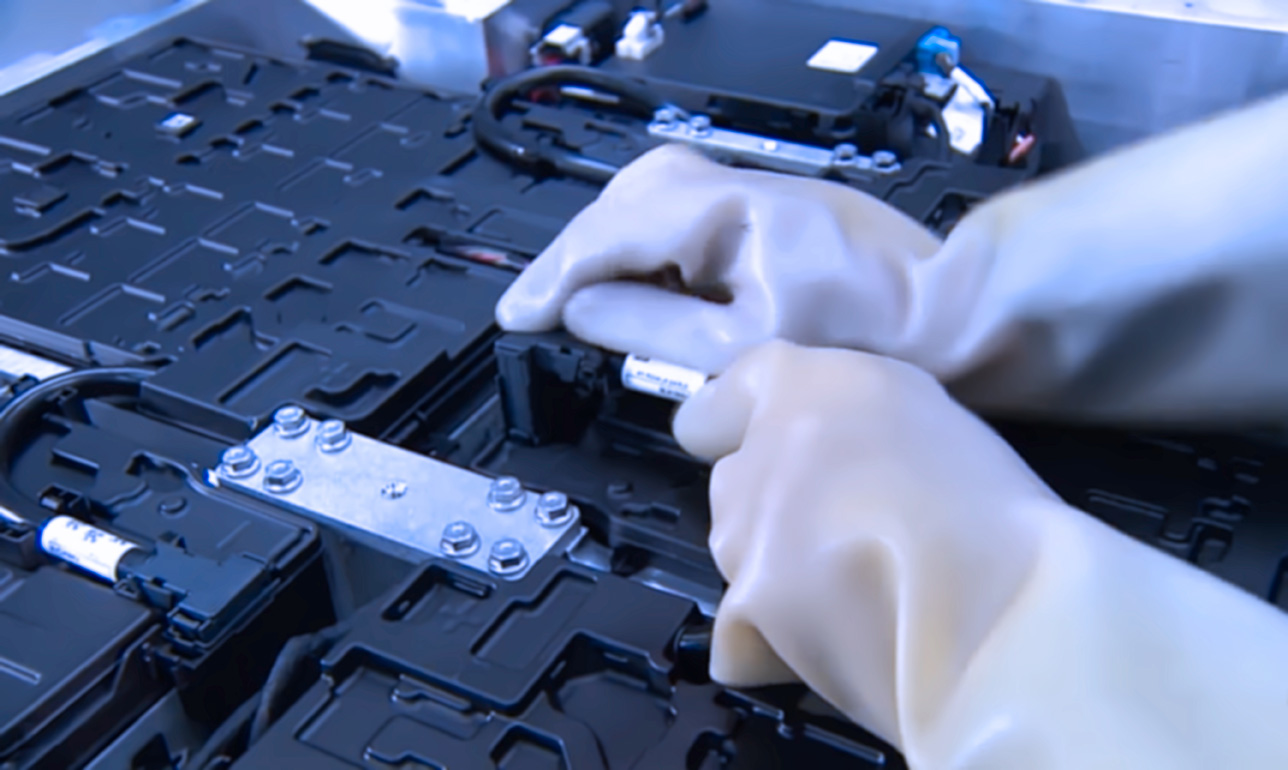Supporting lithium-ion battery production
Depending on the processes deployed on-site, a Loss in Weight feeder can be used in Lithium-ion Battery Production to feed a single, discrete powder or to feed a mixed powder product into a downstream process.
In some places, the Loss in Weight feeders may not be discharging into an IBC or Hopper but used for transporting material to another process stage. No matter how the Loss in Weight feeders are being used in Lithium-ion Battery Production they need to be safe and provide an accurate and consistent, delivery of material.
Inconsistent feeding of materials to loss in weight feeders
For the Loss in Weight feeder (LIW) to deliver a consistent amount of powder to the downstream process, it relies on a consistent and reliable in-feed (top up) to avoid inconsistencies flowing on further down the production line.
If the flow of powders stops, it can cause a slowdown of throughput and create issues for an automated process during normal operation, powder is dosed from the feeder and the built-in load cells record the loss in weight, however, during a refill stage the feeder cannot rely on the signal from the loadcells for depositing product to the downstream process as the weight they are reading is increasing as the hopper is topped up. Instead they rely on turning the internal screw at a fixed rate based on an “average” weight per-revolution that has been calculated during the LIW dosing earlier (in other words, it momentarily changes to volumetric dosing).
Delivering a consistent refill of powders into the LIW feeder ensures that the powder has consistent properties allowing the volumetric dosing to be relied upon.
Additionally, because the feeder is not dosing an exactly known amount during the top-up phase, this refill process needs to be as quick as possible. The powder needs to flow in when the upstream device is called upon. Typically a call signal is for a set period of time, triggered by a low level on the weighing scales or a level probe, if the powder flow is poor then either the request times out and the feeder is not fully refilled (requiring more frequent top ups) or the upper level probe has to wait longer to be covered and the amount of powder discharged under volumetric rate is extended. An inconsistent top up means the “average” volumetric dose fluctuates making it much harder for the system to run accurately during the refill phase.
What is the Matcon solution?
A Cone Valve IBC ensures that even difficult to handle powder can be refilled quickly. Mounting the IBC discharge station close to the inlet of the loss in weight feeder will ensure a regular feed of materials. This will be quick, repeatable and reliable to allow for ‘top-ups’ when called for.
Due the contained nature of Matcon IBCs you also introduce a dust free process and safe transfer of hazardous materials, which means your operators stay safe and materials are free from the risks of moisture ingress.
Bespoke, Materials and Equipment to support your battery manufacturing process
Matcon are powder process experts, who can supply materials handling equipment with product contact and non-contact parts in material to suit your particular battery manufacturing needs. Our standard solutions come with Stainless Steel, Mild Steel and Polyethylene with the ability to apply inert coatings if applicable.
Posted by
Matt Baumber
